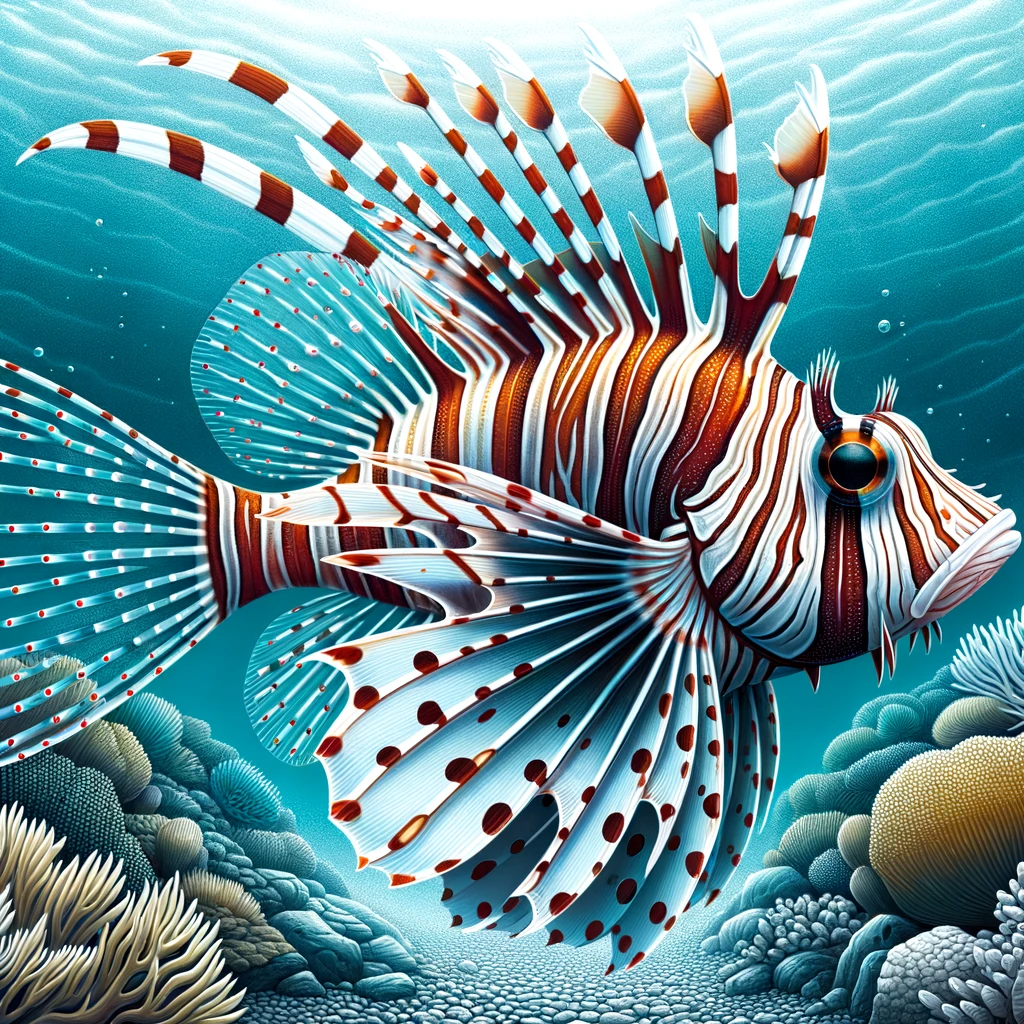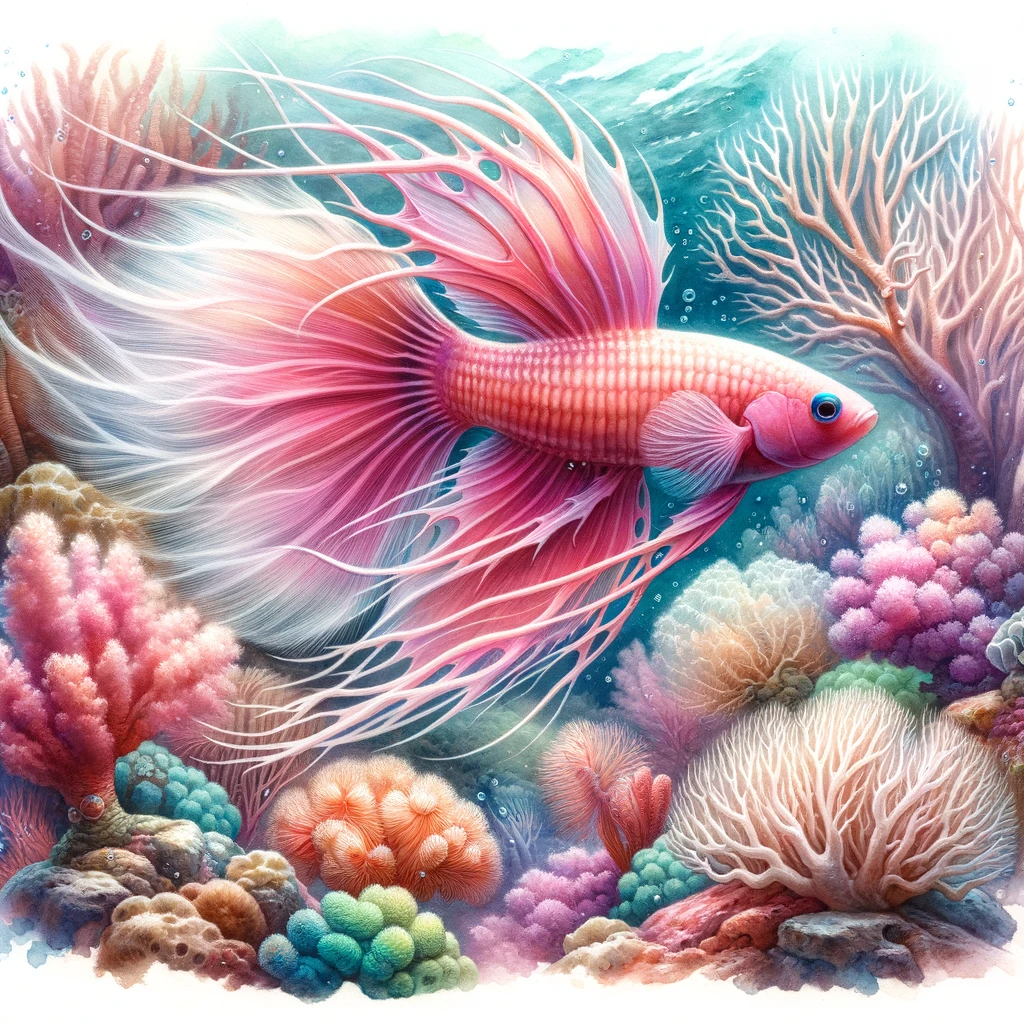Are you looking to care for a Royal Gramma in your aquarium? Look no further! This care guide will provide you with all the information you need to ensure a happy and healthy fish.
From their lifespan and hydration needs to setting up the perfect aquarium and finding compatible tank mates, we’ve got you covered.
Plus, we’ll guide you on the ideal diet and even touch on reproduction. Get ready to become an expert in Royal Gramma care!
Introduction
Welcome to the introduction of our Royal Gramma Care Guide, where you’ll gain valuable insights on how to properly care for this beautiful and fascinating fish.
One of the first things you need to understand about the Royal Gramma is its behavior patterns. This fish is known to be quite territorial and can be aggressive towards other fish of the same species or similar appearance. It’s important to provide them with ample hiding spots and enough space to establish their own territory within the aquarium.
Another interesting aspect of the Royal Gramma is its color variations. These fish have a stunning combination of purple and yellow, with the purple being more prominent towards the head and the yellow towards the tail. However, it’s important to note that the coloration can vary from individual to individual. Some may have brighter colors while others may be more muted. This adds to the uniqueness of each fish and makes them a visually striking addition to your aquarium.
Understanding the behavior patterns and color variations of the Royal Gramma is crucial in providing the best care for them. By creating a suitable environment and ensuring proper social interactions, you can create a thriving and harmonious aquarium for these captivating creatures.
Here are some quick facts about the Royal Gramma fish:
- The Royal Gramma (Gramma loreto) is a species of fish in the family Grammatidae native to reef environments of the tropical western Atlantic Ocean4.
- They are relatively small, averaging slightly over 8 cm (3.1 in) in length4.
- The Royal Gramma is a colorful tropical fish that is found in the Caribbean Sea, which stretches from Florida to the northern coast of South America3.
- They are planktivores, eating mostly zooplankton and crustaceans, and are also cleaner fish that remove ectoparasites from other fish4.
- They prefer to pick their food from the middle of the water column4.
- Their natural range covers the Bahamas, Venezuela, Antilles, Bermuda, and through the waters surrounding Central America and the northern part of South America4.
- The Royal Gramma is considered an ideal inhabitant for most reef aquaria containing coral and other invertebrates due to their relatively peaceful nature, diet, and small size4.
- They can become aggressive towards tank-mates when kept in smaller nano reef tanks4.
- One interesting characteristic of the Royal Gramma is that its coloration tends to fade when water conditions are less than ideal1.
- They are commonly kept in aquariums and are fairly hardy26.
Lifespan
The lifespan of a Royal Gramma can vary depending on various factors such as diet, water quality, and overall care. On average, a well-cared-for Royal Gramma can live for about 5 to 7 years in captivity. However, with optimal conditions and excellent care, some individuals have been known to live up to 10 years or more.
To ensure a longer lifespan for your Royal Gramma, it’s crucial to provide a balanced and varied diet. Their diet should consist of high-quality pellets, frozen or live foods like brine shrimp, mysis shrimp, and small crustaceans. A diverse diet will help maintain their health and enhance their vibrant colors.
Proper water quality is also essential for the longevity of your Royal Gramma. Maintaining stable water parameters, including temperature, pH, and salinity, is crucial. Regular water changes and a well-functioning filtration system will help keep the water quality pristine, preventing common health issues such as fin rot, ich, and bacterial infections.
Additionally, giving your Royal Gramma a stress-free environment with plenty of hiding places and suitable tank mates can contribute to their overall well-being and lifespan. By providing the right care, you can ensure that your Royal Gramma lives a long and healthy life in your aquarium.
Hydration Needs
To maintain the health and well-being of your Royal Gramma, it’s important to meet their hydration needs through proper water management. Royal Grammas require a constant supply of clean, fresh water to thrive in their aquarium habitat. It’s crucial to ensure that the water quality is maintained at optimal levels to support their hydration requirements.
When it comes to water requirements, Royal Grammas prefer a specific range of salinity and temperature. The ideal salinity level for them is between 1.020 and 1.025 specific gravity. Additionally, the water temperature should be kept between 75°F and 80°F to create a comfortable environment for your fish.
Maintaining proper humidity is also essential for the well-being of your Royal Gramma. Although they primarily live in water, they still require a certain level of humidity in their surroundings. To achieve this, you can use a hygrometer to monitor and adjust the humidity levels within the aquarium. Providing adequate ventilation and avoiding excessive moisture buildup will help prevent any respiratory issues that can arise from high humidity levels.
Aquarium Setup
To ensure the optimal environment for your Royal Gramma, proper aquarium setup is essential. Start by selecting a tank size of at least 30 gallons, as these fish need ample space to swim and hide.
Install a reliable filtration system to maintain water quality and remove any harmful substances. A combination of mechanical, chemical, and biological filtration is recommended.
As for lighting requirements, Royal Grammas prefer dimly lit tanks with plenty of hiding spots. Provide them with caves or rockwork to create a sense of security. Avoid bright lights that can cause stress to these shy creatures. Use LED lights with adjustable settings to mimic their natural habitat.
Additionally, ensure that the tank is properly cycled before introducing your fish. Monitor water parameters regularly and maintain stable temperature and salinity levels.
Lastly, strive to create a peaceful environment by carefully selecting tank mates that are compatible with Royal Grammas.
Following these steps will help create a suitable habitat for your Royal Gramma and promote their overall well-being.
Compatible Tank Mates
The Royal Gramma (Gramma loreto) is a popular saltwater fish in the aquarium hobby due to its vibrant purple and yellow coloration and its peaceful demeanor. If you’re considering adding a Royal Gramma to your aquarium, it’s essential to ensure that its tank mates are compatible to ensure a harmonious environment. Here are some compatible tank mates for the Royal Gramma:
- Clownfish: Species such as the Ocellaris Clownfish and the Percula Clownfish are generally peaceful and can coexist well with the Royal Gramma.
Gobies: Many gobies are suitable tank mates, including the Neon Goby and the Yellow Watchman Goby. They usually stick to the bottom of the tank, while the Royal Gramma prefers the middle to upper parts, reducing territorial disputes.
- Blennies: These are peaceful fish that tend to keep to themselves. The Tailspot Blenny and the Bicolor Blenny are good examples.
- Cardinalfish: Species like the Banggai Cardinalfish and the Pajama Cardinalfish are calm and can share a tank with the Royal Gramma.
- Dwarf Angelfish: Fish such as the Flame Angelfish and the Coral Beauty Angelfish are generally non-aggressive and can be housed with a Royal Gramma.
- Wrasses: Many wrasses, especially the smaller species like the Six Line Wrasse, are compatible.
- Tangs: While some tangs can be aggressive, species like the Yellow Tang and the Kole Tang are usually safe choices.
- Soft and LPS Corals: The Royal Gramma is considered reef-safe and won’t harm most corals. Soft corals like Zoanthids, Mushrooms, and Leather Corals, as well as Large Polyp Stony (LPS) corals, are compatible.
- Invertebrates: Most invertebrates, such as snails, hermit crabs, and shrimps (like the Cleaner Shrimp and the Peppermint Shrimp), can coexist with the Royal Gramma.
- Other Peaceful Fish: While the above list provides a good starting point, many other peaceful saltwater fish can also be compatible with the Royal Gramma. Always research individual species before adding them to your tank.

Caution:
- Avoid keeping the Royal Gramma with aggressive or very large predatory fish, as they can see the Royal Gramma as prey.
- Additionally, it’s advisable not to keep multiple Royal Grammas in a small tank, as they can be territorial with their own kind unless in a mated pair.
It’s always a good practice to monitor new additions to the tank to ensure that all inhabitants are getting along and to make adjustments as necessary.
Diet
Feeding your Royal Gramma a balanced diet is essential for its health and well-being. Understanding their feeding habits and meeting their nutritional requirements are key to maintaining their overall health.
Royal Grammas are carnivorous fish that primarily feed on small crustaceans and zooplankton in the wild. In captivity, it’s important to replicate their natural diet as closely as possible. You can do this by providing them with a variety of live or frozen foods such as brine shrimp, mysis shrimp, and small pieces of fish or shrimp.
It’s recommended to feed them small amounts multiple times a day, as they have small stomachs and can only consume a limited amount of food at once. Additionally, incorporating high-quality pellet or flake foods specifically formulated for marine carnivores can provide a balanced diet.
It’s important to avoid overfeeding, as this can lead to health issues and water quality problems. Monitoring their feeding habits and adjusting the amount of food accordingly is crucial to maintaining their health and preventing obesity.
Reproduction
To breed Royal Grammas successfully, you need to create the right conditions in your aquarium. These beautiful fish have specific breeding behaviors and mating rituals that you must understand to facilitate successful reproduction.
When it comes to breeding behavior, male Royal Grammas are known to become territorial. They’ll establish a territory and defend it fiercely, especially during the breeding season. The male fish will engage in a courtship display to attract a female. This display involves the male swimming in a U-shape pattern, flaring its fins, and displaying vibrant colors. If the female is receptive, she’ll respond by displaying similar behaviors.
Once the mating rituals are complete, the female will lay her eggs in a hidden location, such as a cave or crevice in the aquarium. The male will then fertilize the eggs externally. After fertilization, both parents will guard the eggs until they hatch, which usually takes around a week. It’s important to provide plenty of hiding places in the aquarium to ensure the safety of the eggs and the fry.
Conclusion
In conclusion, taking care of a royal gramma requires attention to their lifespan, hydration needs, aquarium setup, compatible tank mates, diet, and reproduction.
By providing them with a suitable environment, proper nutrition, and the right companions, you can ensure their well-being and longevity.
Remember to regularly monitor their health and make any necessary adjustments to their care routine.
With proper care and attention, your royal gramma will thrive in your aquarium.

